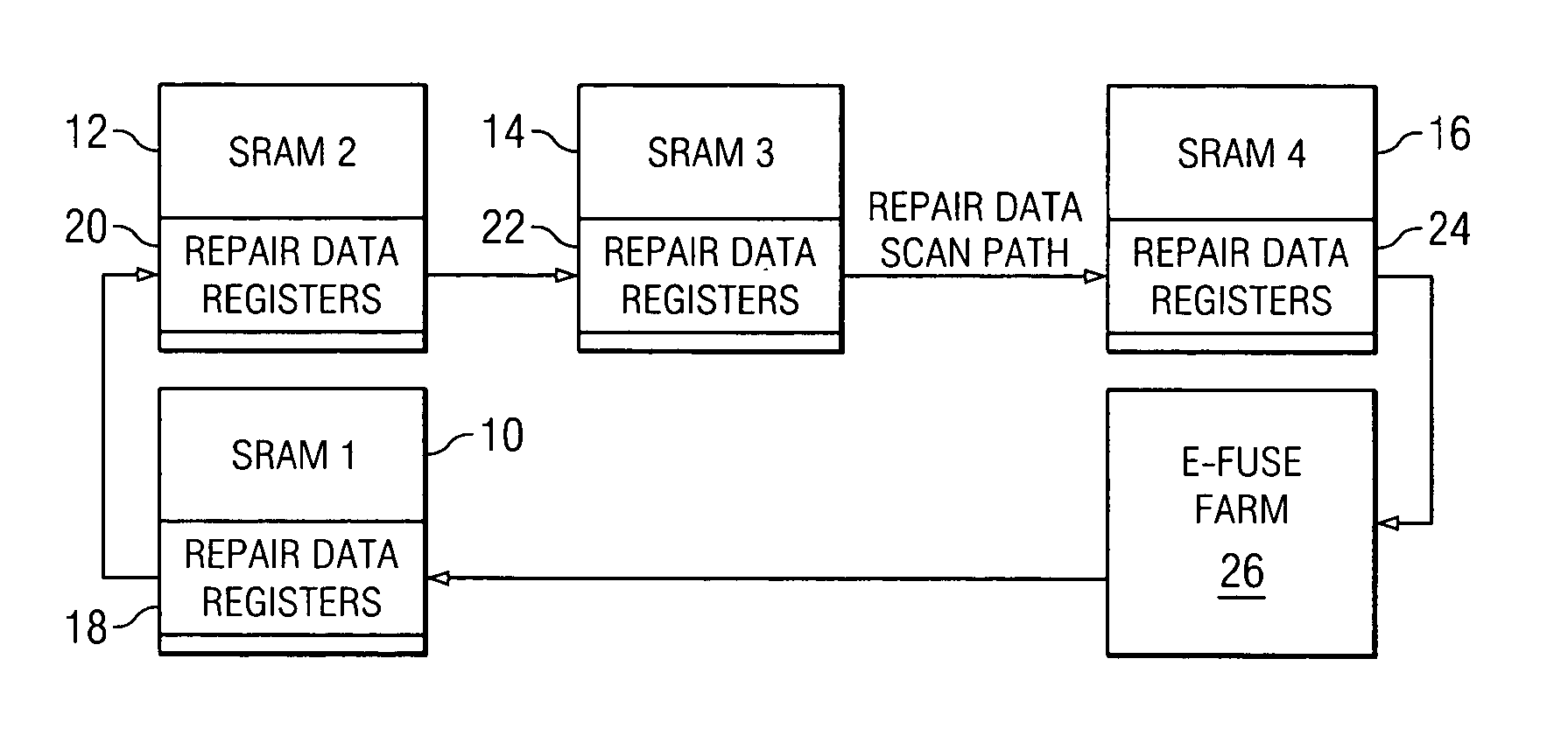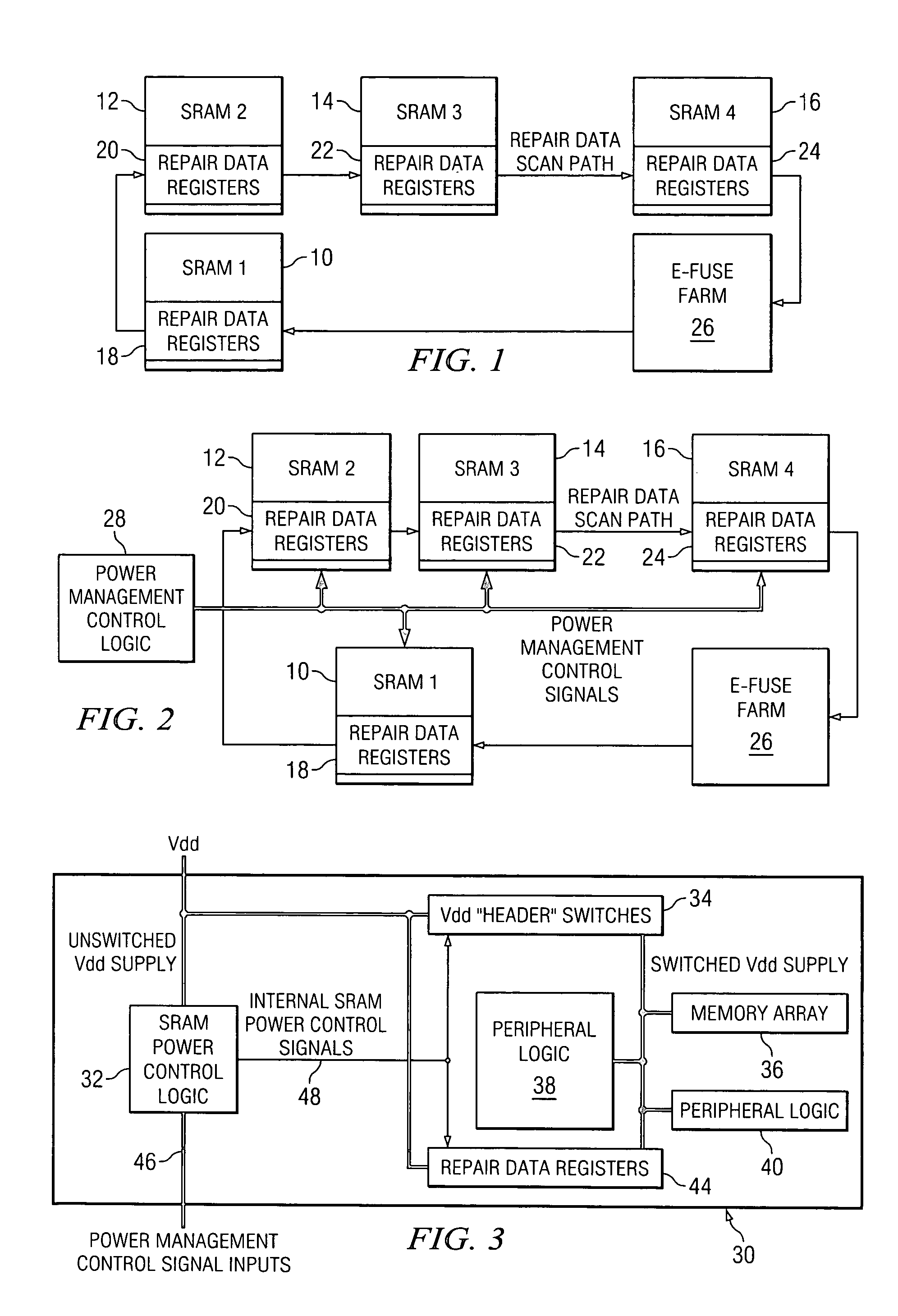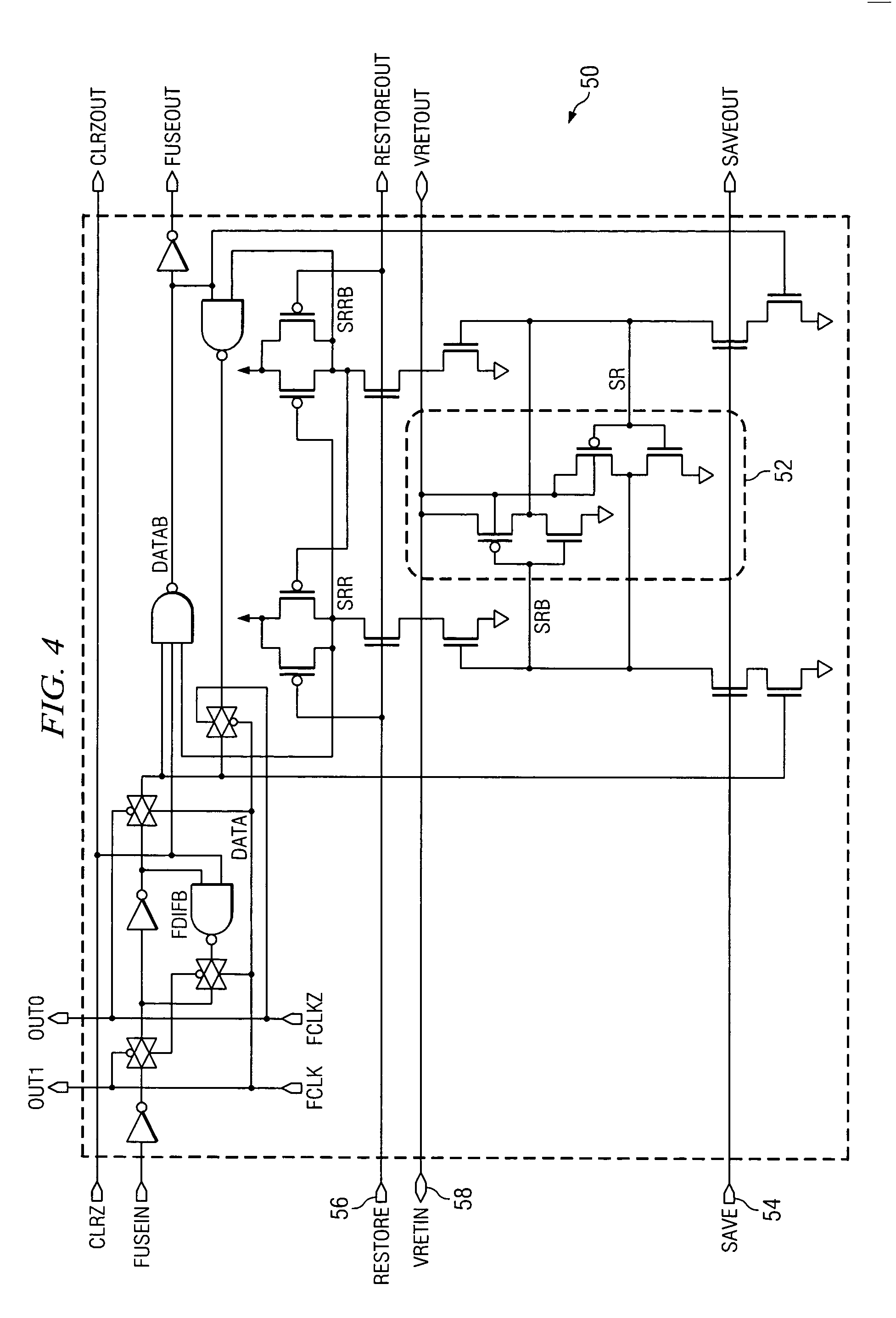Low-power SRAM E-fuse repair methodology
a low-power sram and e-fuse technology, applied in the field of devices, can solve the problems of current implementations providing no methodology to power down one or more memory for low-power/leakage applications, and achieve the effect of significant leakage power savings and removal of system latency during memory and/or e-fuse farm module power-down
- Summary
- Abstract
- Description
- Claims
- Application Information
AI Technical Summary
Benefits of technology
Problems solved by technology
Method used
Image
Examples
Embodiment Construction
[0039]FIG. 1 is a diagram depicting a current E-fuse farm implementation. FIG. 1 shows a plurality of SRAM memory devices 10, 12, 14, 16, each containing its distinct set of repair data registers 18, 20, 22, 24, connected to an E-fuse farm 26. If power is cut to one or more memories 10, 12, 14, 16 and / or the E-fuse farm 26, the repair information will be lost and access to the memories will not be possible until the device is powered off and then on again to reload the repair data. The implementation shown in FIG. 1 thus provides no methodology to power down one or more memories for low power / leakage applications.
[0040]FIG. 2 is a diagram depicting a low power E-fuse farm implementation according to one embodiment of the present invention. The E-fuse farm implementation shown in FIG. 2 is similar to the implementation shown in FIG. 1, except the implementation shown in FIG. 2 can be seen to also employ power management control logic 28. The power management control logic 28 operates...
PUM
 Login to View More
Login to View More Abstract
Description
Claims
Application Information
 Login to View More
Login to View More - R&D
- Intellectual Property
- Life Sciences
- Materials
- Tech Scout
- Unparalleled Data Quality
- Higher Quality Content
- 60% Fewer Hallucinations
Browse by: Latest US Patents, China's latest patents, Technical Efficacy Thesaurus, Application Domain, Technology Topic, Popular Technical Reports.
© 2025 PatSnap. All rights reserved.Legal|Privacy policy|Modern Slavery Act Transparency Statement|Sitemap|About US| Contact US: help@patsnap.com



